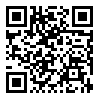Introduction: Image contrast enhancement is an image processing method in which the output image has high quality display. Medical images have prominent role in modern diagnosis; therefore, this study aimed to enhance the quality of medical images in order to help radiologists and surgeons in finding abnormal areas.
Method: The methods used in this study to enhance medical images quality are categorized into two groups; intensity adjustment and noise removal. Intensity adjustment methods including techniques for mapping image intensity values to the new domain. The second group including methods to remove noise from the images. Medical images used in this study including images of spine, brain, lung and breast.
Results: The results were analyzed based on five criteria including the number of detected edges, PCNR, Image Quality Index, AMBE and visual quality that the number of detected edges in images of spine, brain, lungs and breast were 6465, 10305, 16266 and 13509, respectively.
Conclusion: The results show that the methods with intensity adjustment technique have better performance in criteria such as the number of detected edges and image visual assessment. However, the other method include in noise removal technique perform more effectively in PCNR, Image Quality Index and AMBE measure
| Rights and permissions | |
 |
This work is licensed under a Creative Commons Attribution-NonCommercial 4.0 International License. |


